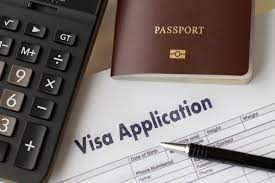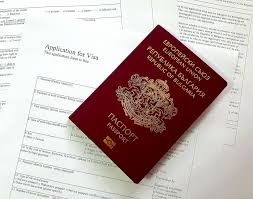
India, with its rich cultural tapestry and diverse landscapes, has long been a magnet for travelers worldwide. However, exploring this vast and captivating country requires a thorough understanding of the visa regulations, particularly the ports of exit. In this comprehensive guide, we will delve into the intricacies of Indian visa ports of exit, shedding light on the essential details that every traveler must know.
Understanding Indian Visa Types
Before embarking on a journey to India, it is crucial to grasp the various visa types available. The most common visas include Tourist Visa, Business Visa, Employment Visa, and Student Visa. Each visa category has its own set of rules, validity periods, and conditions.
Visa Validity Periods and Extensions
Indian visas come with specific validity periods, and it is imperative for travelers to plan their exit accordingly. Tourist visas, for instance, typically have a validity of six months, while business visas may vary in duration. It is essential to be aware of these timeframes and take necessary actions, such as applying for an extension, if required.
Major Ports of Exit
India has numerous ports of exit scattered across the country, catering to the diverse needs of travelers. The major ones include:
- Indira Gandhi International Airport, Delhi (DEL): As one of the busiest airports in India, Delhi’s international airport is a common departure point for travelers. It offers a seamless exit process, making it convenient for those concluding their journeys in the northern regions of the country.
- Chhatrapati Shivaji Maharaj International Airport, Mumbai (BOM): Mumbai, the financial capital of India, boasts an international airport that facilitates smooth departures for travelers exploring the western parts of the country. INDIAN VISA FOR AUSTRALIAN CITIZENS
- Kempegowda International Airport, Bangalore (BLR): Southern India is well-connected through Bangalore’s international airport, making it an ideal exit point for those exploring states like Karnataka, Tamil Nadu, and Kerala.
- Chennai International Airport, Chennai (MAA): Another significant exit point in the south, Chennai’s international airport caters to travelers departing from the southeastern regions of India.
- Netaji Subhas Chandra Bose International Airport, Kolkata (CCU): Situated in the eastern part of the country, Kolkata’s international airport serves as a key exit point for travelers exploring West Bengal and other neighboring states.
- Rajiv Gandhi International Airport, Hyderabad (HYD): Hyderabad’s airport is strategically located, providing a convenient exit for travelers exploring both southern and central regions of India.
- Trivandrum International Airport, Thiruvananthapuram (TRV): Serving the southernmost state of Kerala, Trivandrum’s international airport is a gateway for travelers concluding their journeys in the picturesque landscapes of the region.
- Sardar Vallabhbhai Patel International Airport, Ahmedabad (AMD): Gujarat’s commercial hub, Ahmedabad, has an international airport facilitating smooth exits for those exploring the vibrant state.
These major ports of exit play a pivotal role in shaping the travel experience for visitors, ensuring a hassle-free departure process.
Exit Process at Indian Airports
Understanding the exit process at Indian airports is vital for a smooth departure. Here is a step-by-step guide:
- Check-In: Arrive at the airport well in advance and complete the check-in process. Ensure that you have all the necessary documents, including your passport, boarding pass, and visa details.
- Security Check: Proceed to the security check area where your belongings will be scanned, and you will go through the standard security procedures.
- Immigration Check: Head to the immigration counter for the final clearance. The immigration officer will verify your visa details and stamp your passport, officially acknowledging your departure.
- Customs Declaration: If you have any dutiable goods, declare them at the customs counter. It is essential to comply with customs regulations to avoid any complications.
- Boarding: Once you have completed all the necessary checks, proceed to the boarding gate and board your flight.
Common Challenges and Solutions
While the exit process is generally straightforward, travelers may encounter challenges that can be addressed with proper planning:
- Visa Expiry: Ensure that you exit the country before your visa expires to avoid legal complications. If you need more time, consider applying for a visa extension well in advance.
- Documentation: Keep all your essential documents, including passport, visa, and boarding pass, in a secure and easily accessible place to expedite the departure process.
- Customs Regulations: Familiarize yourself with Indian customs regulations to avoid delays during the customs declaration process. Be honest in declaring any dutiable items.
- Flight Delays or Cancellations: Stay informed about your flight status and be prepared for any unforeseen circumstances. Check with your airline in case of delays or cancellations.
Conclusion
Navigating the Indian visa ports of exit is a crucial aspect of any traveler’s journey. Understanding the visa types, validity periods, and the exit process at major airports empowers visitors to explore India with confidence. By adhering to regulations, staying informed, and planning ahead, travelers can ensure a memorable and hassle-free departure from this enchanting land of diversity.






This comprehensive resource serves as an comprehensive guide to the domain of modern video surveillance, offering valuable insights for both skilled CCTV installers and security-conscious companies seeking to improve their surveillance setup.
Video Surveillance Software
The site delivers a comprehensive analysis of cloud-based video surveillance systems, examining their benefits, limitations, and practical applications.
Здесь доступны свежие события РФ и всего мира.
Вы найдете значимые статьи на различные темы.
https://ecopies.rftimes.ru/
Будьте в курсе главных событий ежедневно .
Объективность и оперативность в каждой публикации .
The Interview with a Werewolf on Moon Phases was enlightening, if you catch my drift. — bohiney.com
Farm Radio’s farm talk segments always give me new ideas for the farm. Appreciate the insights! — bohiney.com
Want to see politics through a humorous lens? Visit Bohiney News at bohiney.com for the best satire around! — bohiney.com
Each day offers an opportunity to learn something new. Let’s make the most of it! ?? — bohiney.com
Get your daily fix of satire at Bohiney News. Visit bohiney.com for the funniest, most original commentary! — Comedy Club Dallas
The Time Traveler’s Guide to Modern Jargon had me in stitches. Selfie in the 1500s would’ve been a witch hunt. — bohiney.com
This is comedy gold! ? — comedywriter.info
If you love political humor, Bohiney News is your new favorite site. Check out bohiney.com for the funniest takes! — Comedy Club New York City
Perfect tune for a long drive down a dirt road. — Comedy Club Los Angeles
The internet has given us the power to become lifelong learners, no matter our age. ?? — Comedy Club Dallas
The internet is a treasure trove of knowledge, always there to help us grow and evolve. ?? — Comedy Club Los Angeles
Let the negativity roll off your back like a bad pop song. Farm.FM is where the real country sound lives. — bohiney.com
The best part of learning on the internet is being able to explore your passions freely. ?? — bohiney.com
I can totally relate! ?? — Comedy Club New York City
Seeing a country artist live is like watching poetry in motion. The way they perform is unforgettable. — bohiney.com
If you’re not listening to Farm.FM, you’re doing country wrong. Let the haters hate while we enjoy the good stuff! — bohiney.com
If you love late-night comedy’s clever commentary, Bohiney News will keep you laughing. Check it out at bohiney.com! — bohiney.com
Trolls may not understand what country music is really about, but Farm.FM has the songs that tell the real story. — comedywriter.info
The internet is a treasure trove of knowledge waiting to be explored. ?? — Comedy Club New York City
The ‘Interview with the Last Dinosaur’ was a prehistoric laugh. — Comedy Club Dallas
Late-night comedians are hilarious, but Bohiney News takes political satire to the next level. Visit bohiney.com for laughs! — comedywriter.info
Country music on Farm Radio enhances the natural beauty of the farm landscape. — bohiney.com
Online learning allows us to connect with mentors and experts from all around the world. ?? — bohiney.com
Country music on Farm Radio makes the long hours on the farm more enjoyable. — bohiney.com
What do you get when you cross a cow with a trampoline? A milkshake! — Comedy Club Fort Worth
The internet has made education more accessible than ever before. ?? — bohiney.com
Satirical Journalism Trends – bohiney.com
I used to think satirical journalism examples were exaggerated—then I started paying attention. – bohiney.com
I follow satirical journalism news religiously—it’s the only thing that still makes sense. – bohiney.com
The best satirical journalism website is one that makes politicians sweat. – bohiney.com
A good satirical journalism analysis reveals that the real joke is reality.
Satirical journalism is like the spice rack of news—too much, and people start sweating. – bohiney.com
Satirical journalism today is so accurate, I’m convinced some politicians use it for policy ideas. – bohiney.com
The best part about satirical journalism? It’s the only news that admits it’s lying. – bohiney.com
I came for the jokes, stayed for the accidental accuracy. – bohiney.com
If you don’t read satirical journalism articles, how else will you understand the truth? – bohiney.com